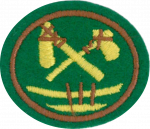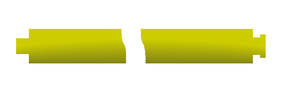Difference between revisions of "AY Honors/Canoe Building/Answer Key/es"
(Created page with "</noinclude> <!-- 8. Ayudar en la construcción de cubiertas, soportes adicionales, mástil y vela, si la canoa es de doble casco o de la clase de soportes adicionales. -->") |
(Created page with "{{clear}}") |
||
| Line 82: | Line 82: | ||
<!-- 8. Ayudar en la construcción de cubiertas, soportes adicionales, mástil y vela, si la canoa es de doble casco o de la clase de soportes adicionales. --> | <!-- 8. Ayudar en la construcción de cubiertas, soportes adicionales, mástil y vela, si la canoa es de doble casco o de la clase de soportes adicionales. --> | ||
| − | + | {{clear}} | |
| − | |||
Each boom receives long pegs which are then connected to the float. The length of the pegs is adjusted so that the float will be positioned at the surface of the water. The pegs are lashed both to the booms and to the float. When lashing the pegs to the floats, a hole is bored through the float and the cordage is passed through it. This prevents the lashing from being positioned at the bottom of the float where it would be subjected to extreme wear and tear as the canoe is dragged across rocks and up onto beaches. | Each boom receives long pegs which are then connected to the float. The length of the pegs is adjusted so that the float will be positioned at the surface of the water. The pegs are lashed both to the booms and to the float. When lashing the pegs to the floats, a hole is bored through the float and the cordage is passed through it. This prevents the lashing from being positioned at the bottom of the float where it would be subjected to extreme wear and tear as the canoe is dragged across rocks and up onto beaches. | ||
Revision as of 16:52, 17 January 2021
| Construcción de canoas | ||
|---|---|---|
| Asociación General
|
Destreza: 3 Año de introducción: Desconocido |
|
Requisitos
1
2
3
4
5
6
7
8
Each boom receives long pegs which are then connected to the float. The length of the pegs is adjusted so that the float will be positioned at the surface of the water. The pegs are lashed both to the booms and to the float. When lashing the pegs to the floats, a hole is bored through the float and the cordage is passed through it. This prevents the lashing from being positioned at the bottom of the float where it would be subjected to extreme wear and tear as the canoe is dragged across rocks and up onto beaches.
The float is typically pointed at the bow end and square at the stern.
Mast and Sail
If a canoe is outfitted with a mast and sail, it should also have outriggers. Otherwise, it can easily be toppled by the wind.
The mast is roughly 4 meters![]() long and tapers from 28 mm
long and tapers from 28 mm![]() at the top to 45 mm
at the top to 45 mm![]() at the bottom. It is inserted into a hole in the seat, and then into a socket cut into the bottom of the boat to receive it.
at the bottom. It is inserted into a hole in the seat, and then into a socket cut into the bottom of the boat to receive it.
A few inches above the seat it is fastened to a boom. The boom is the same length and diameter as the mast. Shoulders are cut near both ends, with the mast-end having a deeper shoulder (see illustration).
The boom is simply tied to the mast, and the sail is tied to both the mast and the boom. The sail itself is triangular.
See http://www.mit.edu/people/robot/lepalepa/index.html for detailed drawings.
9
Choose a soft wood and shape the model as closely as you can to match your canoe. People will often carve a scale model before beginning to shape the log. The model can then be used as a reference.
Reference
- http://www.greatdreams.com/canoe2.htm
- http://www.nzetc.org/tm/scholarly/tei-BucSamo-t1-body1-d7-d1-d4.html
- http://www.willghormley-maker.com/MakinADugoutCanoe.html
- Categoría: Tiene imagen de insignia
- Adventist Youth Honors Answer Book/Honors/es
- Adventist Youth Honors Answer Book/es
- Adventist Youth Honors Answer Book/Skill Level 3/es
- Categoría: Libro de respuestas de especialidades JA/Especialidades introducidas en Desconocido
- Adventist Youth Honors Answer Book/General Conference/es
- Adventist Youth Honors Answer Book/Recreation/es
- Adventist Youth Honors Answer Book/Recreation/Primary/es
- Adventist Youth Honors Answer Book/Stage 0/es
- Adventist Youth Honors Answer Book


